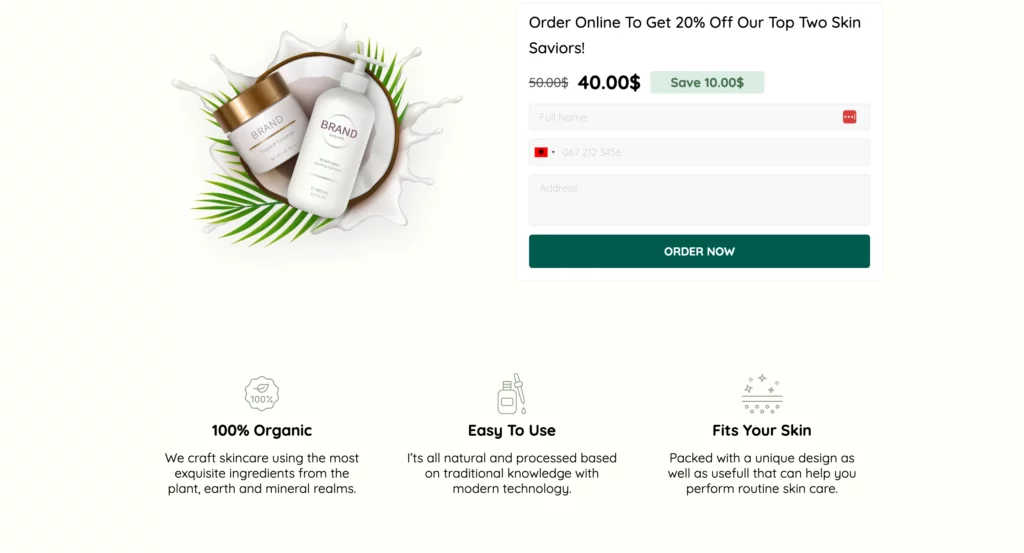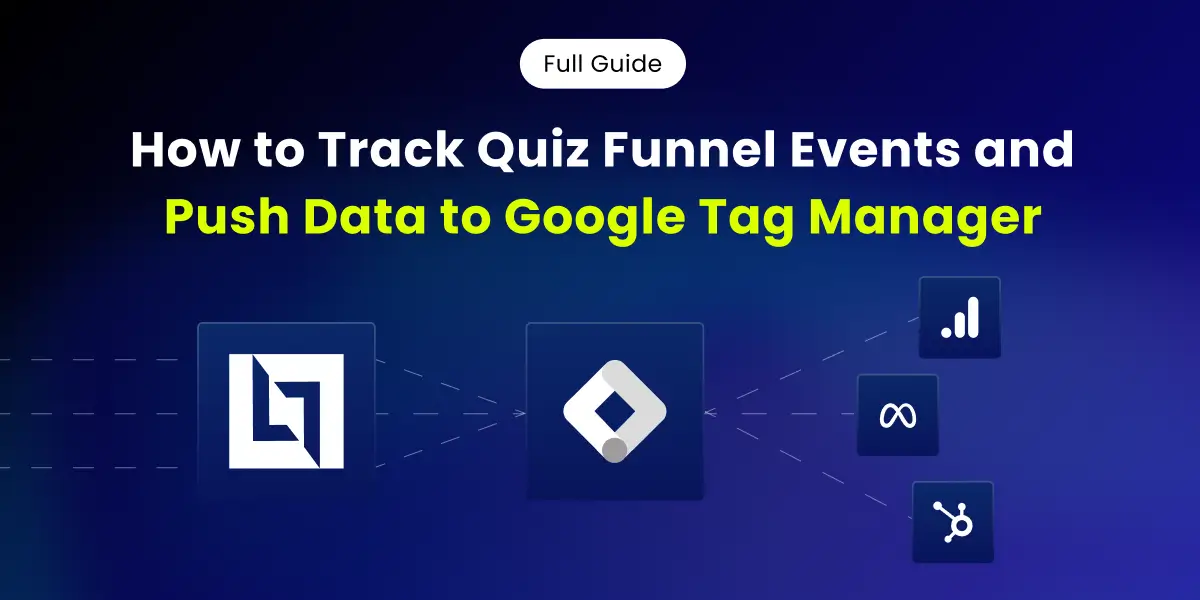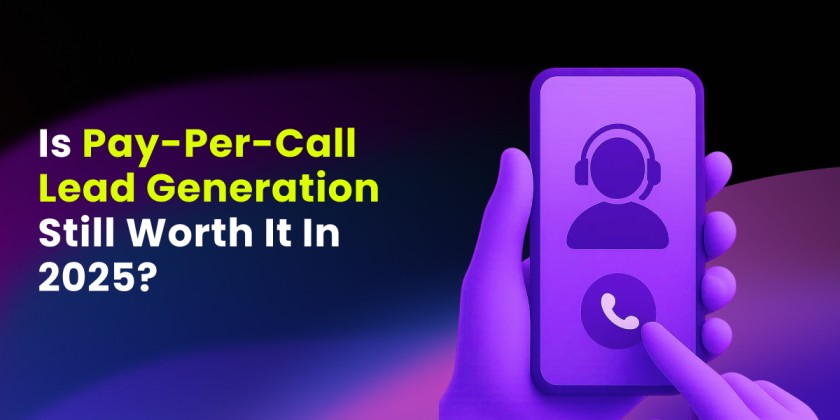In digital marketing, driving traffic to your website is necessary, but the real question remains: what happens when they get there?
This is where landing pages come into great avail. A well-crafted landing page can actually convert casual visitors into leads and then again into customers.
However, not all landing pages are created equal. SEO and PPC landing pages have different objectives and employ different tactics.
PPC landing pages are action-oriented, direct, and purposed for immediate results like signing up or buying a product. SEO landing pages are optimized for long-term organic traffic by offering value through content and gaining trust through rankings in the search engines.
In this article, we’re going to break down the major differences between SEO vs PPC landing pages – along with the advantages and disadvantages of each approach.
We are also going to give you some examples, which would help you decide which technique best corresponds to your marketing objectives.
What Is a Landing Page?
To understand the difference more, let me first explain what a landing page is: a landing page is a specific web page that users land on when they click on a link, coming from an online ad, an email, or a search engine result.
Its purpose is singular, be it the collection of contact information, an encouragement to purchase a product, or to prompt users to sign up for a webinar. For more insights, visit our High-Converting Landing Pages guide to explore strategies that make landing pages effective.
These pages are designed with conversion in mind. They have a very strong call to action and few distractions.
Primarily, there are two effective ways of sending traffic to the landing page: SEO and PPC advertisements. Now, let’s dive into it.
What is an SEO Landing Page?
The SEO landing page is a prime webpage optimized to rank in search engines’ organic results without using paid advertising.
These pages are intended to appeal to visitors searching for specific keywords and words or phrases that mirror whatever content they have on offer.
The main goal of the SEO landing page is organic traffic, which has to rank high on Google or any other search engine through targeted searches without spending on advertisements.
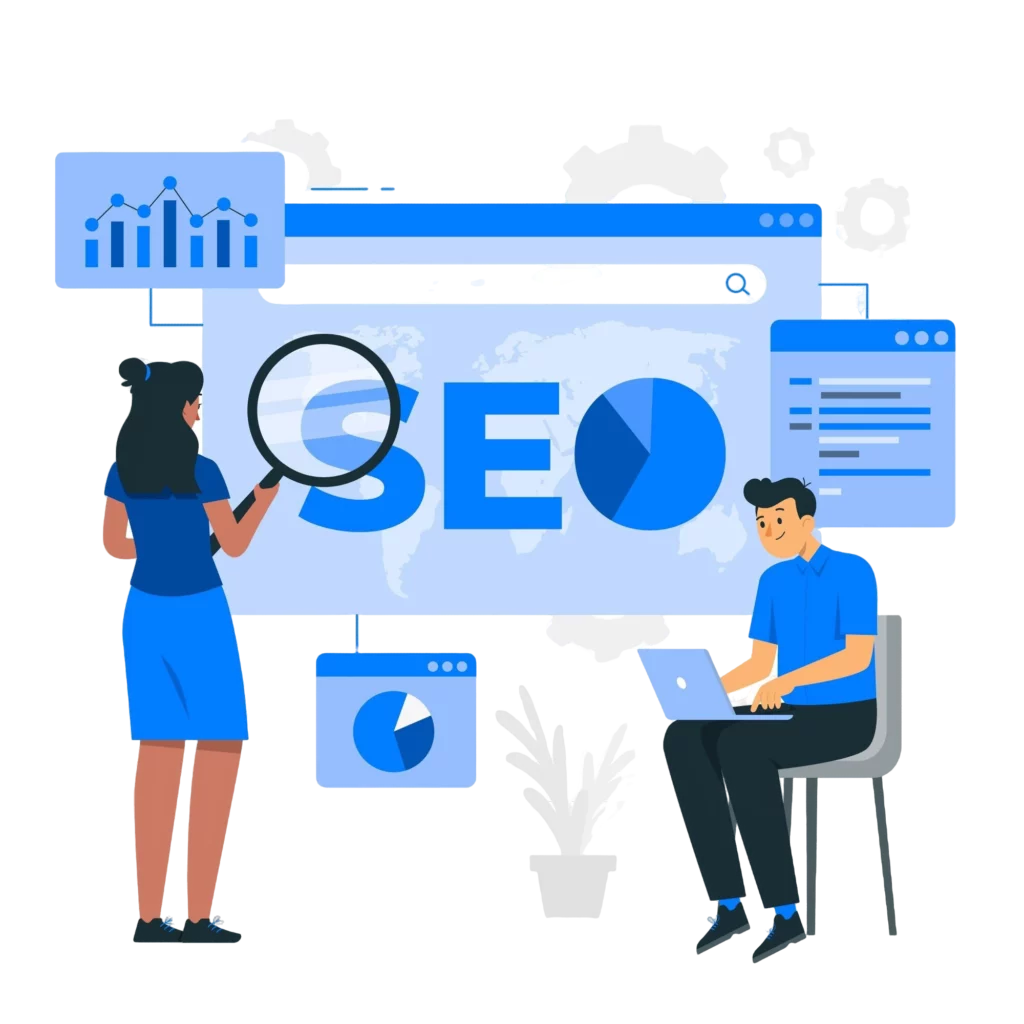
Key Features of SEO Landing Pages:
SEO landing pages have some striking features that contribute to their efficiency.
First of all, they are saturated with content. It means that it should be informative but relevant to users’ requests. That is where the focus on high-quality content becomes crucial. It means search engines give priority to those pages that provide real value for their audience.
These pages are also much longer than PPC pages, including detailed descriptions, frequently asked questions, case studies, and even a blog-like format to establish themselves as an authority on the subject and to further help the ranking of the page.
Last but not least, adding internal links to other related pages on your website is a good idea. This helps users further navigate and find more information, but it also tells the search engines that your content is part of a big, interconnected web.
With keywords, it is all about finding that happy medium. Instead of forced, keyword-stuffed content, today’s SEO landing page approach is centered on language flow. You must focus on ranking for good search terms relevant to the main themes of your content.
SEO landing pages would be designed, keeping in consideration both the audience and the search engines. That would mean including well-crafted meta tags, schema markup, alt text describing every image, and even the page is mobile-friendly.
Example of an SEO Landing Page:
Picture a landing page on a beauty eCommerce site that guides on “Selecting the Perfect Skincare Routine.”
This page has the potential to attract organic traffic from people looking for terms like “ideal skincare routine” or “tips for sensitive skin care.”
The content would be rich with useful information, featuring comprehensive advice, product recommendations, and insights from professionals, all while inviting visitors to explore other skincare items available on the site.
The template is available on landerlab.io
Pros of SEO Landing Pages:
– Steady Traffic: When an SEO landing page hits a good ranking, it can keep bringing in traffic without needing to spend on ads all the time.
– Increased Trust: People tend to trust organic search results more, which can lead to better conversion rates.
– Cost Savings: With SEO traffic being organic, you avoid clicking costs and ad expenses, making it a budget-friendly approach in the long run.
Cons of SEO Landing Pages:
– Takes a While: Crafting and fine-tuning SEO landing pages can be a lengthy process, sometimes taking months to really see the payoff.
– Tough Competition: If you’re going after popular keywords, it can be a real challenge to climb the ranks, especially in crowded markets.
– Algorithm Changes: Search engines tweak their algorithms all the time, which can affect your rankings and means you need to keep optimizing.
What is a PPC Landing Page?
A PPC landing page is a specific webpage designed especially for paid advertising campaigns whose ultimate objective is to capture the attention of the user as soon as he or she clicks on it on Google, Facebook, or any other platform.
Unlike SEO-centered landing pages, PPC pages aim for conversions. They are usually plain and clean from any extra detail, while the call-to-action effect is to make a user take quick actions, like signing up for news or completing a purchase.
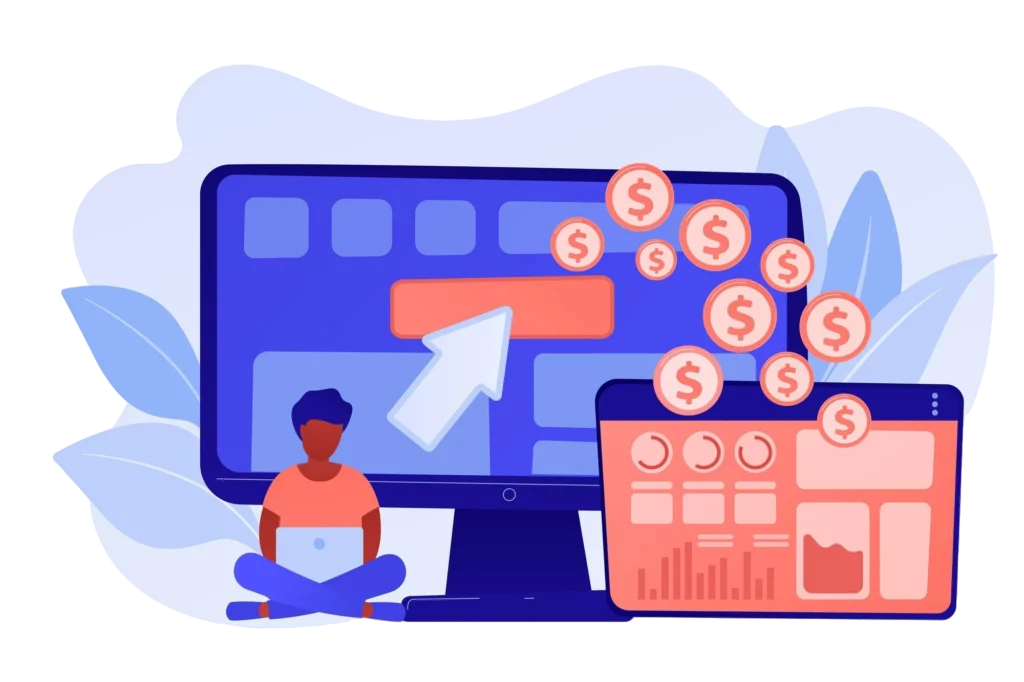
Key Features of PPC Landing Pages:
Some of the outstanding features that make PPC landing pages so effective include the following: It is extremely focused on content on what the user is trying to do.
That may mean matching the intent of the search or the ad they clicked. Messaging on the page will actually represent seamless experiences from what was promised in the ad.
Next, these pages are typically leaner than your average SEO landing pages. They just get to the gist of things with clear, concise text that gets users to take a specific action without any extra fluff.
Finally, you will understand how PPC landing pages reduce distractions by cutting down navigation options so that a user can stay focused and not be taken far afield to other parts of the site.
Built for Speed: Every PPC landing page is designed to be quick since these are linked to paid advertising campaigns. The latter is one of those things that will guarantee a fast and seamless user experience, which is very important in preventing visitors from leaving the page.
Prominent Call to Action (CTA): The CTA is typically highlighted prominently, allowing visitors to take immediate action. Whether it reads “Buy Now,” “Sign Up,” or “Download,” it is clearly visible and eliminates any potential confusion.
Here’s a scenario for a PPC landing page:
Imagine an e-commerce store that has run a Google Ads campaign for its new range of sports shoes. The landing page will contain the shoes, with great visuals, a small description, and stylish and one big “Shop Now” button.
Everything else is kept to a minimum so as not to provide any extra links that might distract visitors from making a purchase.
Pros of PPC Landing Pages:
– Instant Traffic Boost: Once your PPC ad is up, you may instantly start viewing visitors to your landing page.
– Precision Targeting: You can customize your PPC landing pages for specific audiences, keywords, and interests, making sure they align with what users are looking for.
– Easy Experimentation: A/B testing different parts like headlines, calls to action, and images is a breeze, helping you figure out what drives the best conversions.
Cons of PPC Landing Pages:
– Expensive: The traffic from PPC is not free; it charges per click. If the landing page doesn’t turn out to be very effective, then it adds up.
– Temporary: When your ad budget is depleted, the traffic halts. Without continuous funding, PPC landing pages won’t bring in lasting visitors.
– Ad Weariness: Eventually, people might ignore your ads or engage less, meaning you’ll need to frequently adjust your approach.
Crafting High-Converting Landing Pages: Strategies and Tools
You probably know that the most important thing in SEO and PPC landing pages is the creation of the landing page itself.
Yes, you could hire some developers and designers to take care of it, but why bother when you can make things easier with LanderLab?
Extremely intuitive, and much more affordable than a developer, and you can build pages just by dragging and dropping elements around, with no coding knowledge required.
It also features over 120 ready-made templates in its settings for targeting such industries as roofing, Medicare, auto insurance, and many more.
On top of that, LanderLab has built-in A/B testing features, which means you can try out various designs and messaging strategies to see what works best. Read the Complete Guide to A/B Testing Your Landing Pages
It also integrates with popular marketing tools like Zapier and Mailchimp, along with tracking platforms such as ClickFlare and Voluum, making it a versatile choice for your landing page needs. Try Landerlab free for 7 days.
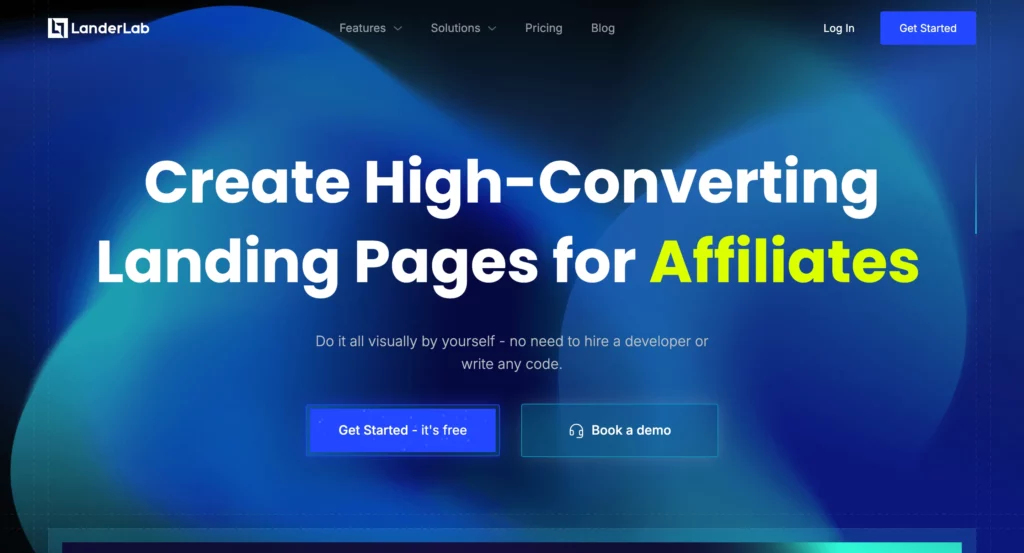
SEO vs. PPC Landing Pages: Which Should You Use?
Either SEO or PPC landing pages will be your choice, depending on your goals, timeline, and budget. In this section, let’s briefly break down when each approach might be the better fit:
Use SEO landing pages if:
-You need long-term, sustained traffic;
-You have invested time in actually creating the content and optimizing it;
-You want to achieve credibility and trust through organic rankings.
PPC landing pages are used if:
-You are out of time and need traffic and conversions ASAP.
-You have some kind of limited-time promotion.
-You have the budget to invest in paid ads.
-You want to reach your audience precisely.
Most businesses take the best-of-both-worlds approach by using SEO and PPC landing pages in concert. By doing this, you drive more kinds of visitors and set your landing pages up for sustainable success, along with quick conversions.
Conclusion on SEO vs PPC Landing Pages
Being able to understand the differences between SEO and PPC landing pages is important to anyone interested in creating an effective digital marketing strategy. While both types focus on conversion, they differ in purpose and methodology.
SEO landing pages will show long-term approaches to build better authority and organic traffic over time, while for PPC landing pages, the aim is at the fast-moving and results-oriented actions provided by paid advertisements.
Therefore, analysis of objectives and available resources will show the type of landing page combination that best serves the needs of your business.
Through the development of the proper strategy, you will be able to convert clicks into real conversions and true success with your digital marketing.

